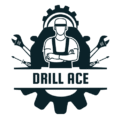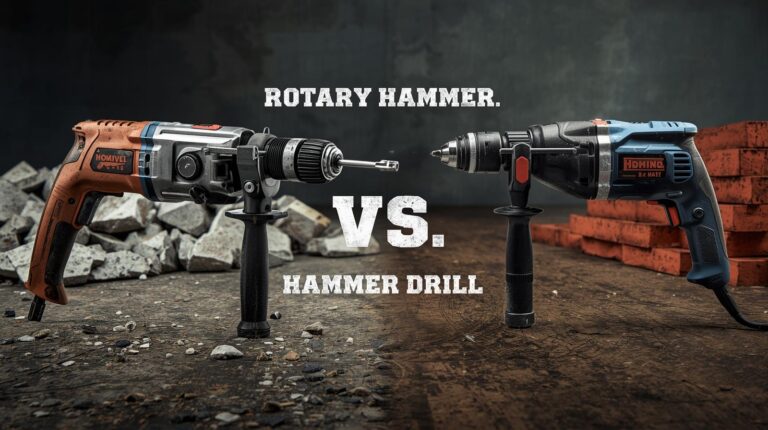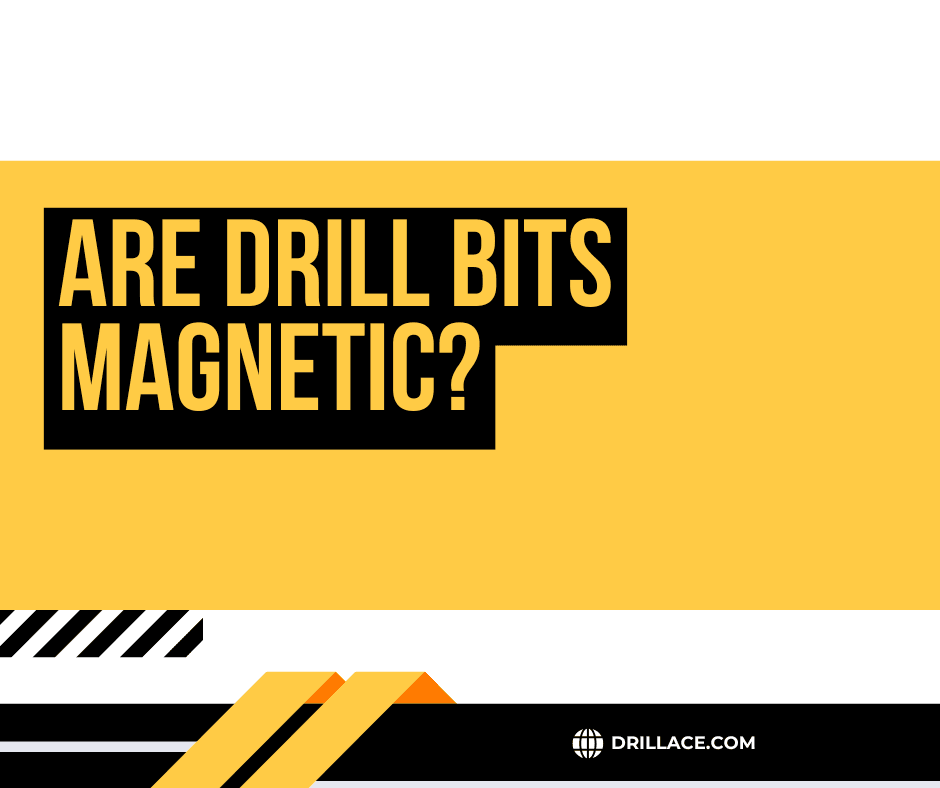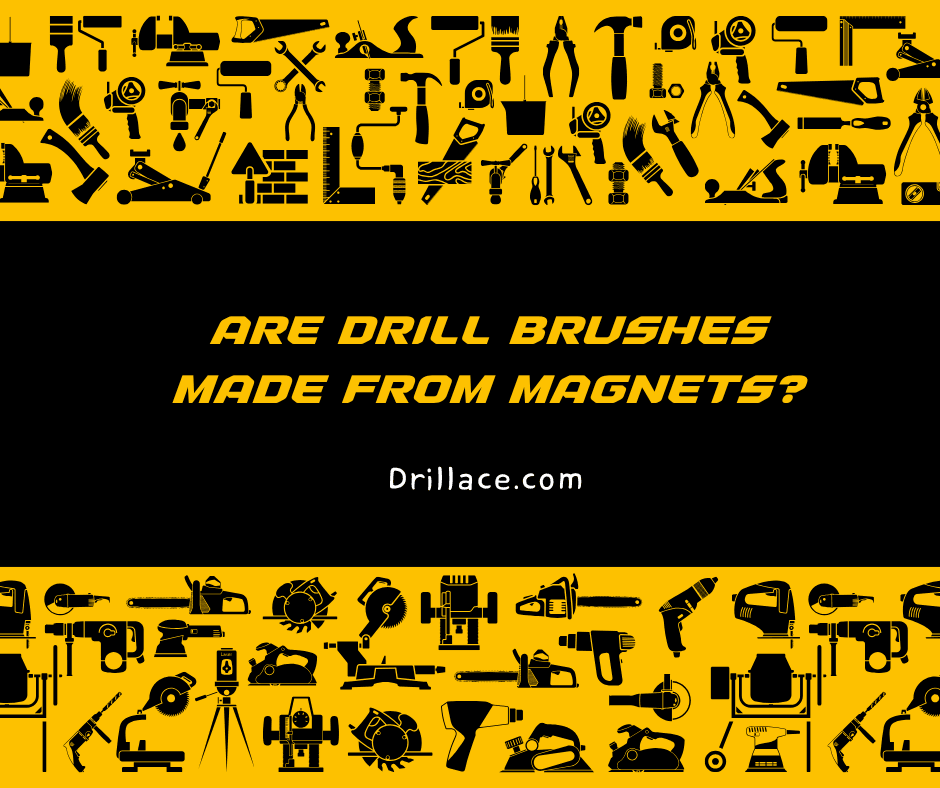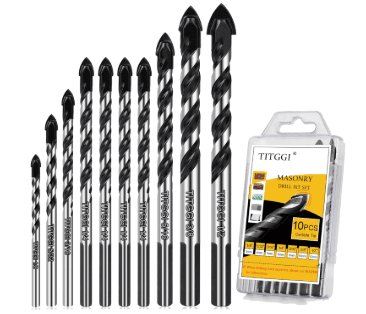Rotary Hammer vs. Hammer Drill: A Pro’s Guide to Not Wrecking Your Tool
Walk into any tool store, and you’ll see a wall of drills that look vaguely similar. Many have a little “hammer” icon on the mode selector, and they all promise to make holes. But lurking among the standard “hammer drills” is a beefier, more aggressive-looking tool: the “rotary hammer.” To the untrained eye, they seem to do the same job. To a professional, using the wrong one is like trying to win a Nascar race with a pickup truck—it’s inefficient, frustrating, and you’ll probably destroy your equipment.
As a contractor who has burned out more than one hammer drill by asking it to do a rotary hammer’s job, I’m here to give you the definitive, real-world breakdown. Understanding the fundamental difference between these tools will save you time, money, and a whole lot of smoke.
The Short Answer for Pros in a Hurry
A Hammer Drill is a “drill that hammers.” It’s a versatile, all-purpose drill for wood, metal, and plastic that has a secondary mode for occasional, light-duty drilling into brick and block. It’s a jack-of-all-trades.
A Rotary Hammer is a “hammer that drills.” It is a specialized, heavy-duty tool designed primarily for drilling and chipping concrete. It hits significantly harder and is far more durable and efficient for masonry work. It’s a master of one.
The rule of thumb: If the material is concrete or you’re drilling more than a dozen holes in masonry, grab the rotary hammer. For anything else, use a hammer drill.
The Core Difference: How They Hit
The real distinction isn’t just power; it’s the mechanism inside the tool. This is the most important concept to grasp.
The Boxer vs. The Karate Master Analogy
Imagine you need to break a board.
A Hammer Drill is like a boxer throwing a flurry of rapid, light jabs. It uses two ribbed metal discs (a clutch) that spin against each other, clicking in and out rapidly. This creates a high-frequency, low-impact vibration. It’s noisy and jarring, and it basically chips away at the material through brute vibrational force.
A Rotary Hammer is like a karate master delivering a single, focused, powerful strike. It uses a piston driven by a crankshaft to launch a “flyer” that strikes the back of the bit. This creates a lower-frequency, high-impact blow. It’s a much more efficient and powerful hammering action that pulverizes the concrete in its path.
Head-to-Head Comparison Chart
Let’s put them side-by-side to make the choice crystal clear.
| Feature | Hammer Drill | Rotary Hammer |
|---|---|---|
Hammer Drill
|
Rotary Hammer
|
|
| Primary Purpose | All-purpose drilling (wood, metal) with occasional light masonry. | Drilling and demolishing concrete and heavy masonry. |
| Hammer Mechanism | Mechanical Clutch (High-Speed Vibration) | Electro-Pneumatic Piston (High-Impact Blows) |
| Best For | Drilling a few holes for shutters in a brick wall. | Drilling dozens of anchor holes in a concrete slab. |
| Bit System | Standard 3-Jaw Chuck (Round or Hex Shank Bits) | SDS, SDS-Plus, or SDS-Max (Slotted Shank Bits) |
| Can It Chip/Demolish? | ❌ No | ✔ Yes (Most models have a “hammer only” mode) |
| Can It Drill Wood/Metal? | ✔ Yes (Excellent at it) | ✔ Yes (With an adapter, but it’s clumsy) |
| User Fatigue | High vibration, jarring on the user. | Less vibration due to a more efficient mechanism. |
| Example Tool | DeWalt 20V MAX XR Hammer Drill (DCD996) | Bosch 18V Bulldog Rotary Hammer (GBH18V-26D) |
The Final Verdict: Which One Do You Actually Need?
This is one of the easiest decisions in the tool world once you understand the core difference. It’s not about which is “better,” but which is right for your primary tasks.
Get a Hammer Drill if:
- You are a homeowner, woodworker, remodeler, or DIYer.
- Your main tasks involve drilling into wood, drywall, and metal.
- You only occasionally need to drill a small hole (under 1/2″) into brick, mortar, or a cinder block.
Get a Rotary Hammer if:
- You are a professional electrician, plumber, concrete worker, or general contractor.
- Your job requires you to drill multiple holes in solid concrete on a regular basis.
- You need to do any light chipping, tile removal, or demolition.
Frequently Asked Questions
1. Can I use an SDS bit in my regular hammer drill?
No. The slotted shank of an SDS bit will not be held securely or centered in a 3-jaw chuck. You must use bits that match your drill’s chuck.
2. Can I use my regular drill bits in a rotary hammer?
Yes, with an adapter. You can buy a special chuck adapter that has an SDS shank on one end and a traditional 3-jaw chuck on the other. However, you must use it in the “drill only” (no hammering) mode.
3. What are SDS, SDS-Plus, and SDS-Max?
They are different sizes of the Slotted Drive System. SDS and SDS-Plus are the most common and are interchangeable, for holes up to 1-1/8″. SDS-Max is a larger, heavy-duty system for bigger rotary hammers used for serious demolition.
Affiliate Disclosure: To support our content and hands-on testing, this post contains affiliate links. If you make a purchase through these links, we may earn a small commission at no extra cost to you. We only recommend tools we personally own, use, and trust on our job sites.
